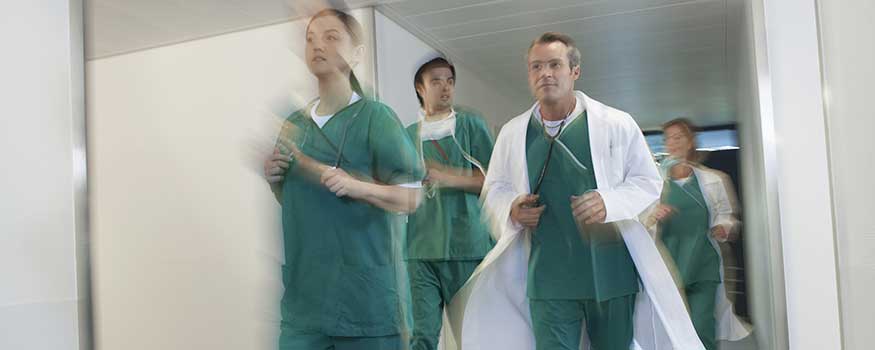Stephen Bernard, age 20, arrives in stable condition on your orthopedic unit after minor ankle surgery. He’s awake, alert—and starving. Post-op orders allow a soft diet. His mother brings him a late lunch, so everyone’s happy—but not for long. Within an hour, Stephen doesn’t feel well. He complains of feeling “itchy” and nauseated and says he has slight abdominal pain.
History and assessment hints
A quick review of Stephen’s chart shows no known allergies. On further assessment, you notice his face is flushed and his lips are swollen. His skin is cool and clammy, and a red rash covers his arms. His vital signs are: blood pressure, 88/54 mm Hg; pulse, 140 beats/minute; respirations, 32 breaths/minute, labored; and oxygen saturation (SaO2), 84% on room air.
You suspect a hypersensitivity reaction that may quickly progress to anaphylaxis. Uncomfortable with a “wait and see” approach, your nursing intuition tells you to act immediately.
Call for help
You stay with Stephen and give 100% oxygen by face mask. The charge nurse notifies Stephen’s physician of his condition, your assessment findings, and the intent to activate the hospital’s rapid response team (RRT).
On the scene
The RRT arrives 2 minutes later. Team members include an intensive care unit nurse, a physician assistant, and a respiratory therapist. As the RRT begins patient assessment, Stephen starts wheezing and becomes lethargic.
A large-bore peripheral I.V. line is established and a fluid bolus of 1 L normal saline solution is given for volume replacement and expansion. Further instructions include epinephrine 0.5 mg I.M. to reverse hypotension, diphenhydramine 25 mg I.V. and famotidine 20 mg I.V. to block histamine release, and methylprednisolone 100 mg I.V. to reduce inflammation and edema. Oxygen is given to keep SaO2 above 90%.
Thirty minutes later, Stephen’s vital signs are: blood pressure, 118/76 mm Hg; pulse, 80 beats/minute and steady; respirations, 26 breaths/minute and unlabored; and SaO2, 93% on 3 L of oxygen. His facial swelling has decreased, his skin is warm and dry, and the rash on his arms is fading. When auscultating his lungs, you note clear breath sounds bilaterally. Oriented but fatigued, Stephen denies pain and dyspnea and states he is definitely not hungry.
Outcome
RRT members update Stephen’s physician while you document the incident in the patient’s medical record, as will the RRT members. Stable now, Stephen will need close observation for the next 24 hours. But thanks to your fast intervention—and the swift response of the charge nurse and RRT—a potentially life-threatening situation has been averted.
Education and follow-up
Later, you learn Stephen’s “late lunch” was a shrimp-based soup, and his anaphylactic reaction most likely stemmed from an unknown shellfish or iodine allergy. You educate Stephen and his family about shellfish allergy, signs and symptoms of anaphylaxis, and the need for immediate treatment.
During initial exposure to an allergic antigen, the body produces antibodies and the immune system becomes sensitized to that antigen. Anaphylaxis occurs on subsequent exposure to that antigen. When the antibodies and antigen react, sudden release of histamines and other chemical mediators causes vasodilation, hypotension, urticaria, and muscle spasms in the bronchi and GI tract. Anaphylaxis occurs within minutes to 2 hours after exposure. Unless treated immediately, it’s fatal. So by all means, follow your nursing instinct. You just might save a life.
Selected references
For a complete list of selected references, see selected references for February 2007.
Joanna E. Cain, BSN, RN, is President of Auctorial Pursuits, Inc. in Wilmington, N.C. Mary Lu Daly, MS, RN, CCRN, CCNS, is a Clinical Nurse Specialist in the medical intensive care unit (ICU), an Education Consultant, and Rapid Response Team (RRT) Coordinator at Rochester General Hospital in Rochester, N.Y. Jeanne Powers, MS, RN, CCRN-CMC, CNS, is a Clinical Nurse Specialist in the medical ICU and is on the RRT Committee at Rochester General Hospital.


















